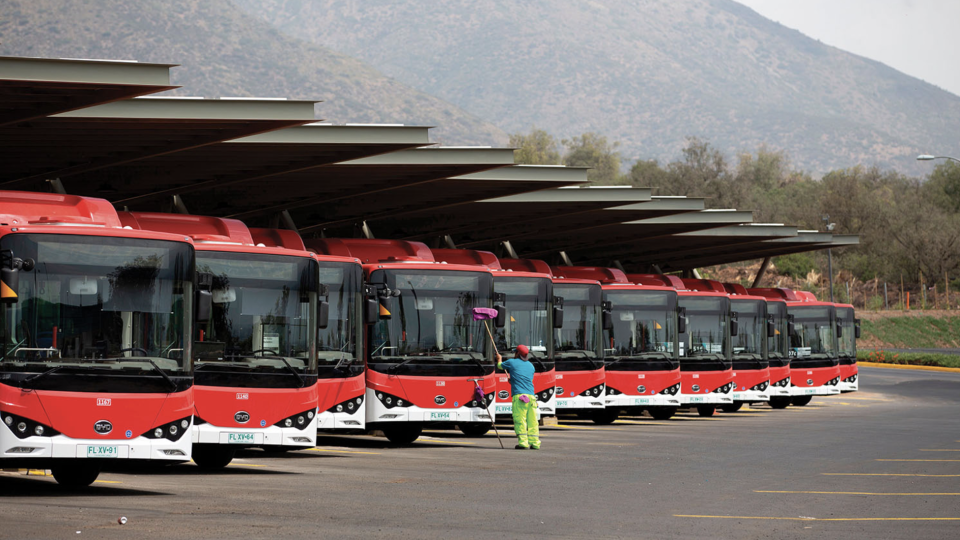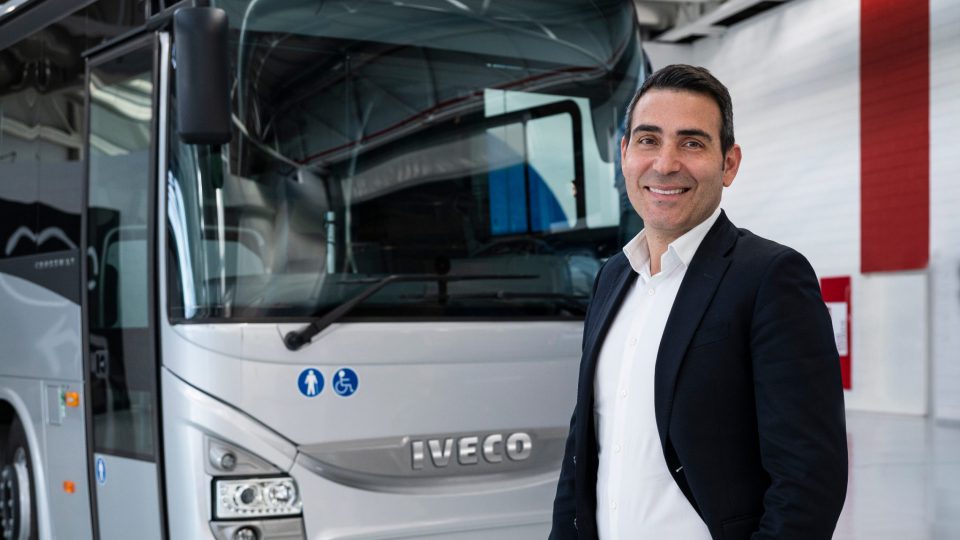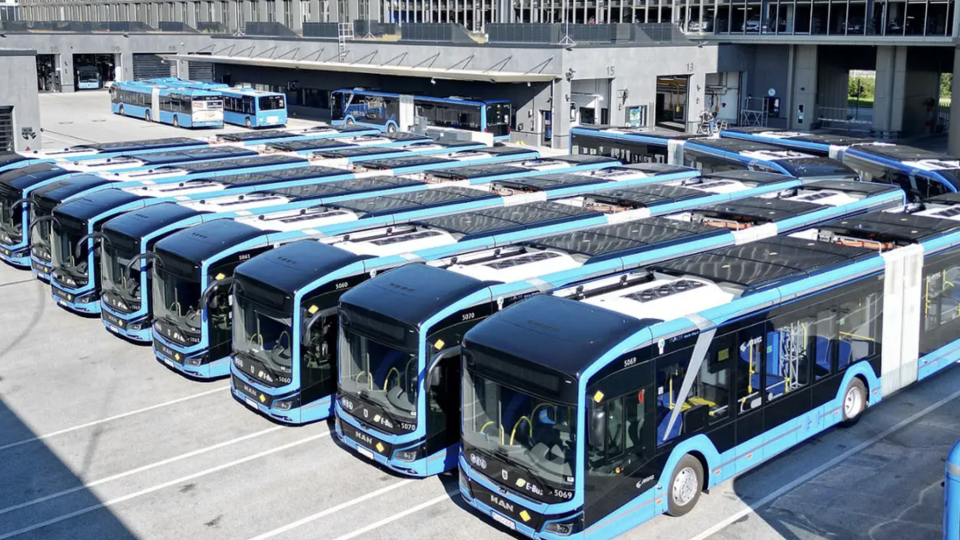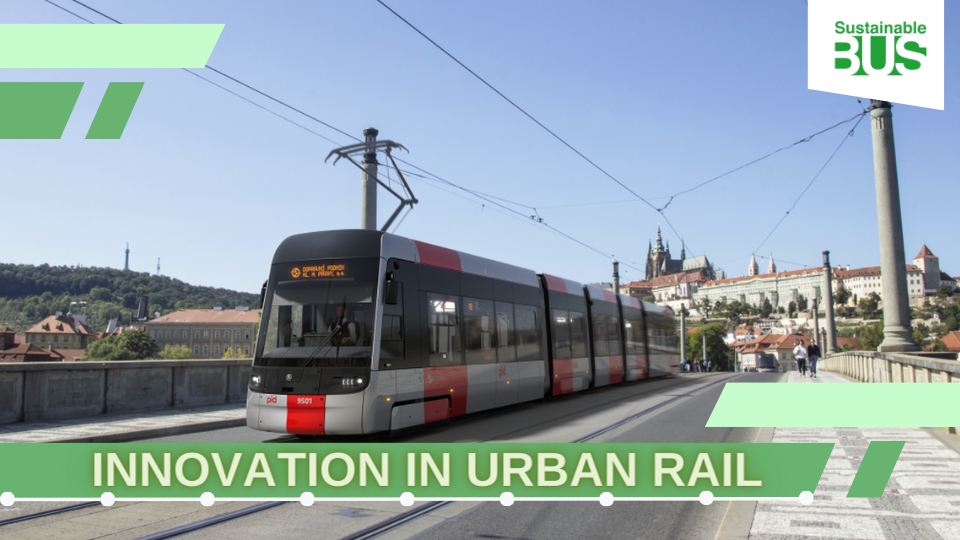Amos Haggiag, Optibus: “Public transport needs to adapt and embrace all forms of mobility”. Our interview
As a software company with the goal of revolutionizing transportation networks, Optibus focuses on optimizing real-time operations and supporting the transition to electric and zero-emission buses through IT technology. Amos Haggiag, CEO and Co-Founder of Optibus, shares insights on their global expansion, future of mobility, company’s strategies and the importance of public transit. Public transit […]

As a software company with the goal of revolutionizing transportation networks, Optibus focuses on optimizing real-time operations and supporting the transition to electric and zero-emission buses through IT technology.
Amos Haggiag, CEO and Co-Founder of Optibus, shares insights on their global expansion, future of mobility, company’s strategies and the importance of public transit.
Public transit needs to adapt and embrace all forms of mobility. The goal should be to create a comprehensive and interconnected transportation system that seamlessly incorporates trains, buses, micromobility, on-demand shuttles, and autonomous vehicles. By merging these modes of transportation, we can achieve a holistic system that caters to the diverse needs of commuters and optimizes efficiency in urban mobility.
Amos Haggiag, CEO and Co-Founder of Optibus
Amos Haggiag, Optibus enabling zero emission operation
May you provide us a picture of Optibus?
Optibus is a software company that provides a cloud-native platform for designing transportation networks, creating timetables, allocating vehicles and drivers, and ensuring efficient real-time operations.
When we first founded Optibus, our software was designed around scheduling drivers and allocating vehicles while planning the network. Over the years, we expanded the platform’s capabilities to address new challenges, such as the optimization of charging processes for electric and zero-emission buses. This involves determining when to charge, how long to charge, which type of charger to use, and prioritizing charging based on the vehicles’ and drivers’ schedules.
The transition to e-mobility is driving your product development, then?
Currently, many operators are rapidly transitioning to electric or zero-emission buses, and numerous cities plan to build 100% zero-emissions bus fleets within the next decade. Achieving this goal will be extremely challenging without the aid of technology, as it facilitates the management of the charging infrastructure, vehicles, and batteries. We have made substantial investments in developing AI-powered, digital tools that make it easier to manage electric vehicles and hybrid fleets.
Furthermore, we have also support real-time operations, which involve adjusting and optimizing operations in accordance with what is happening on the road at any given moment. This includes the real-time management of drivers and ensuring buses leave the depot on time, calculating costs, and addressing unpredictable issues such as traffic jams and vehicle breakdowns. By effectively managing these factors, we contribute to the real-time optimization of the network and ensure smooth operations.
You gather a lot of data for the backend side. Are there any future developments planned for a front desk app for passengers?
We do not have plans to develop an Optibus app specifically for passengers. Our focus is primarily on providing service information to passengers through various transport apps such as Google, Apple, and more. These apps utilize the data from Optibus’ platform, including routes and timetables. Last year, we acquired a company in the US that specializes in GTFS and passenger information systems to ensure that we can effectively provide accurate information about routes, timetables, and more to passengers through various apps and passenger information systems. Our intention is to collaborate with these app providers so that Optibus users can provide reliable service information to as many passengers as possible, ensuring a postive passenger experience.

Optibus, Africa is showing big opportunities
What are the figures for Optibus in terms of cities and regions?
In November 2022, usage of Optibus’ software hit 2,000 cities worldwide with our breakthrough into Vienna, Austria. That’s double the number of cities that were using Optibus just nine months prior, in February, we reached our 1,000th city milestone with Santiago, Chile. Our growth and reach is truly global, visible in more than 35 countries worldwide, including Italy, Spain, the United Kingdom (where 70% of all public buses are planned and scheduled using Optibus), Portugal (where our software optimizes 50% of the public buses in Lisbon), Spain, Germany, France, Turkey, as well as countries in North and South America, such as Brazil, the United States, and Canada, and Asia Pacific. Furthermore, we have are involved in helping to plan the first public bus network in Kampala, Uganda, which is going to have an amazing social and economic impact on people across the city and region.
Please explain…
Imagine a city that has no existing public transit, where only 5% of the population owns a car, and where millions of people primarily commute by walking or by using unsafe, unregulated forms of mobility. However, with the support of organizations like the World Bank and the advent of new technologies, substantial opportunities are emerging. By bringing public transit in these areas, many people will finally have a safe, reliable means to commute to work, attend school, and access healthcare facilities. This transformation will significantly improve their quality of life.

Did Optibus set any targets for this year?
In terms of growth, we are continuing to pursue our exponential goals and to establish our presence in newregions so we can expand globally. We believe that public transportation is essential worldwide, and it is crucial for us to have a presence in every city, in every country to create an impact. On the product side, you can anticipate numerous updates related to electric vehicles (EVs). Our customers are using Optibus’ EV scheduling software at various stages of their journey to establish zero-emissions fleets, be it rolling out their very first electric buses, to managing a fleet that is already 100% electric or that consists of hundreds or thousands of electric buses, as is the case with some of our clients in the United States and Chile, which has one of the largest electric bus fleets in the world. However, scaling up electric bus fleets presents new challenges. For instance, if numerous buses are charging simultaneously, there may not be sufficient electricity supply. We are focusing on citywide optimization of charging infrastructure and addressing associated issues.
Additionally, we see immense potential for innovation in the real-time operations space, and are actively exploring ways to introduce advancements and improvements. Public transportation has traditionally been managed manually worldwide. Decisions related to traffic jams, vehicle breakdowns, and other incidents that happen unexpectedly have been typically handled using manual interventions, such as phone calls to drivers. We want to make the process of reacting in the moment much smoother and more automated, so that operators can work smarter and passengers experience fewer service disruptions.
Autonomous driving, challenges and opportunities
What about autonomous driving?
Autonomous driving will be a major development for public transportation. However, it is difficult to determine the timing of how things will unfold, as even the most promising projects take more time than expected. However, the replacement of all drivers with autonomous technology seems unlikely, at least in our lifetime. It’s more realistic that the driver role will evolve, requiring more oversight and management of the vehicle in place of time behind the wheel.
However, as the cost of personal autonomous vehicles decreases, there is a risk that people may overly rely on them for travel, and the convenience may outweight the offer of public transportation. Personal AVs will not solve issues like pollution if the vehicles are not zero emissions, and they will not reduce traffic and congestion if every person still travels in their own vehicle. With the added convenience of personal AVs, public transportation will need to put up an even bigger fight against private cars.
That’s a crucial issue.
Yes. In a scenario where car ownership is increasingly convenient, it is likely that many individuals would opt for private transportation, leading to a proliferation of cars on the roads and severe congestion issues within cities. It is crucial to bring people together and implement appropriate regulations. Whether a car is autonomous, electric, or driven by a person, it still occupies physical space on the roads. Autonomous vehicles, although promising in terms of safety, are not a standalone solution to alleviate congestion.
Public transit plays a pivotal role in mitigating traffic congestion. However, with the advent of autonomous cars, there is a risk that ridership on public transit systems might suffer.
How to react?
To prevent this, public transit needs to adapt and embrace all forms of mobility. The goal should be to create a comprehensive and interconnected transportation system that seamlessly incorporates trains, buses, micromobility, on-demand shuttles, and autonomous vehicles. By merging these modes of transportation, we can achieve a holistic system that caters to the diverse needs of commuters and optimizes efficiency in urban mobility.
The mindset of a startup
Are you still considering your company a startup?
It depends on how you define a startup. I receive this question frequently, and I have contemplated it myself. Is Google considered a startup? Probably not. People often perceive startups as small companies, but Optibus currently has 400 employees worldwide. So, are we still a startup? In my opinion, a startup is a company that is in a phase of high growth and disruption, distinct from companies that have already saturated the market or focus on low growth. We are still relatively small compared to the overall opportunity, and our progress is rapid, leading to significant growth and developments every year. This necessitates different strategies and entry into new markets. Therefore, we are still operating with the mindset of a startup.
My definition of a startup is a company that is experiencing rapid growth, making substantial investments, and expecting substantial profits but has not yet achieved profitability.
Optibus’ current focus is on investing heavily in growth, product development, and market expansion. Building the best, most innovative platform possible and expanding rapidly to make it available to every city in the world is our priority. We still embody the startup spirit in that nature.
Is there a projected timeframe when you expect to shift your focus towards profitability?
I don’t believe there will be a specific moment when we suddenly switch our focus. Innovation is an ongoing process, and we will continue to innovate our software until we feel that we have a solution for every problem. However, there will always be new challenges to address. As we progress, our profits will naturally increase. We started the company with no revenues, and only expenses. Over time, our revenue grew, leading to profits. However, maintaining an innovative mindset will always be a core aspect of our company.






